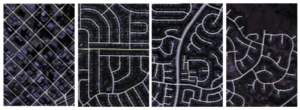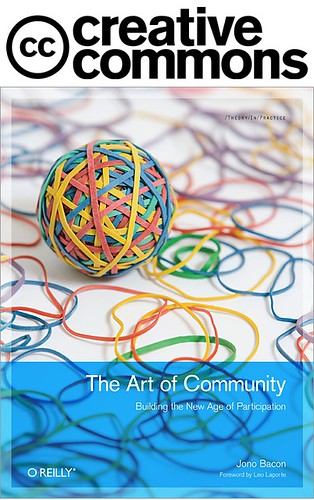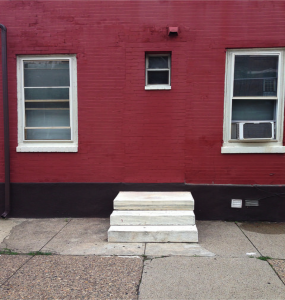The difference between a community and a network is that you belong to a community, but a network belongs to you. You feel in control. You can add friends if you wish, you can delete them if you wish. You are in control of the important people to whom you relate. People feel a little better as a result, because loneliness, abandonment, is the great fear in our individualist age. But it’s so easy to add or remove friends on the internet that people fail to learn the real social skills, which you need when you go to the street, when you go to your workplace, where you find lots of people who you need to enter into sensible interaction with.
community
Cities and Suburbs: Notes on a Lecture
The lecture began with a short piece on population. The future of the world is urban centers and the population of the world will arrive at 10 billion people. This has nothing to do with large families. Because as Hans Rosling explains in this talk. We are not having more children but the the population is aging. He talks of “the big fill up”.
That we are moving from the countryside to the cities and have been doing so for a really short period of time. So while Urban settlements appeared around 3,000 B.C. in ancient Mesopotamia, Egypt, and the Indus Valley we were mostly country dwellers until about 2008.
In 1800, only 3% of the world’s population lived in cities, a figure that rose to 47% by the end of the twentieth century. In 1950, there were 83 cities with populations exceeding one million; by 2007, this number had risen to 468. (Wikipedia).
Despite this there has been a long tradition of the viewing the city as a bad place and the countryside as a good place. In poetry we can see this trend as far back as to the bucolic poetry of Theocritus (c. 270 BC). Basically the city is unhealthy for both mind and soul.
Today the concept of the city is a space that is divided up into an inner zone which usually matches the boundaries of the old industrial city and suburbia, which was designed for the automobile, beginning from the 1920s.
One of the creators of suburbia (both as a concept and a reality) in the USA was the property developer William Levitt whose massive construction and development of whole regions spawned copies all across the country. In Levitttown home construction began in 1952 and 17,311 homes were built by 1958. At its peak, through an intense division of labor, the workers were building a home every 16 minutes.
A home in 16 minutes. Perspective – how long did it take for you to wake up and get dressed this morning?
Levittown was also a highly regulated space, designed to conform to the ideal of the American family. Among the rules were things like: no laundry hanging outside on Sunday, and no fences between properties. More seriously Levitt did not sell homes directly to African Americans. In 1957 an African-American family, the Myers, bought a home from the previous owners
Their move to Levittown was marked with racist harassment and mob violence, which required intervention by state authorities. This led to an injunction and criminal charges against the harassers while Myers and their supporters refused to surrender and received national acclaim for their efforts. Wikipedia
The dream of suburbia is also reflected in the ideology of the time. Personal property was good for the individual and for the society. The words of Sen. Charles Percy (1966) are interesting here:
“For a man who owns his home acquires with it a new dignity… He begins to take pride in what is his own, and pride in conserving and improving it for his children. He becomes a more steadfast and concerned citizen of his community. He becomes more self-confident and self-reliant. The mere act of becoming a homeowner transforms him. It gives him roots, a sense of belonging, a true stake in his community and well being.”
Indeed Percy is expressing what is to be considered the norm. This norm becomes that which is supported socially, economically and politically. If a society believes that home ownership is the keystone of society then it will invest in ensuring tax incentives for the creation of a wider base of home owners in society.
The ideal of the suburban homes has its most interesting expression in the front lawn. Naturally, our understanding of this artifact is colored by both our time and our space. But it is interesting to see that the large expanse of expensive green desert in front of peoples houses (in American suburbia) is never used, highly maintained and costly. It is all about signalling. This resonated with many students and stories of the ways in which neighbors are judged by the appearance of this empty piece of land were shared.
But the connection between private property and community involvement is under question. Salon Magazine reported on the increase in renting homes in USA and the way in which this does not signal the end of community:
Philly, a recent survey of renters conducted by the city found unexpected levels of social engagement. Planners were surprised by how many renters knew their neighbors, participated in neighborhood events and helped maintain the physical environment through volunteer work.
Indeed renting is the norm in many other countries and it is growing in the birthplace of suburbia. There is also a growing critique towards the ways in which suburbs are problematic on many levels. One suburban critic is Charles Marohn who is interviewed in The Suburbs Will Die: One Man’s Fight to Fix the American Dream
The “suburban experiment,” as he calls it, has been a fiscal failure. On top of the issues of low-density tax collection, sprawling development is more expensive to build. Roads are wider and require more paving. Water and sewage service costs are higher. It costs more to maintain emergency services since more fire stations and police stations are needed per capita to keep response times down. Children need to be bused farther distances to school.
The article was written by Leigh Gallagher whose book The End of the Suburbs came out in 2013.
Among the other critiques (environmental, social, economic) an interesting, and maybe counter-intuitive, study shows that suburbia may even be bad for your health. The Atlantic ran an article called “Do We Look Fat in These Suburbs?”
“Garrick and Marshall report that cities with more compact street networks—specifically, increased intersection density—have lower levels of obesity, diabetes, high blood pressure, and heart disease. The more intersections, the healthier the humans.”
 In the last section of the presentation I moved on to the city and the users. Once again the point here is to show that there are “ideal” users and that those who do not conform are not welcome to the city.
In the last section of the presentation I moved on to the city and the users. Once again the point here is to show that there are “ideal” users and that those who do not conform are not welcome to the city.
We have talked about anti-homeless design or uncomfortable design in the last lecture Control By Design. But what I wanted to get on to was the ways in which the city is being used. The ways in which our public spaces are most probably not public anymore but they are privately owned and therefore no longer need to conform to the rules of the public space. Or rather they can be made to fit the ideals of the owner.
Showing the ways in which spaces are used in alternative ways I mentioned the case of The Hess Triangle
In 1910, nearly 300 buildings were condemned and demolished by the city to widen the streets and construct new subway lines. David Hess battled the city to keep the Voorhis, his 5-story apartment building. He resisted eminent domain laws for years, but was ultimately forced to give up his property.
By 1914, the 500-square-inch concrete triangle was all that remained of Hess’ property. As if his loss wasn’t bad enough, the city asked him to donate the tiny portion of concrete to use as part of the public sidewalk. Out of spite, Hess refused the offer. On July 27, 1922, he had the triangle covered with mosaic tiles, displaying the statement, “Property of the Hess Estate Which Has Never Been Dedicated For Public Purposes.” Atlas Obscura
And the Seattle nail house that seems to have been the inspiration for the movie Up. Edith Macefield refused to sell her house while a mall was being built around it. In 2006 she turned down US$1 million to sell her home to make way for a commercial development in the Ballard neighborhood of Seattle.
We closed the lecture by talking about strange little remnants of architecture and city planning: desire paths and Thomassons. The latter is
a term launched by Genpei Akasegawa in 1972, and refers to an architectural detail that is both completely and utterly useless, but is still being maintained. These steps in south Philly are an example:
And here are the slides I used
Social Media: a-social communities? Notes from a short talk
Yesterday I was participated in a late night session with every speaker getting 10 minutes and then being part of a panel. The theme of the evening was communities (my bad translation) To live as a person: Legitimacy and qualities in chosen and natural communities.
Among the other speakers were a professor of theology on the connection between space, religion and community and two photographers each involved in different local community/activism projects. They had lovely portraits of people in semi self-organizing communities under threat (a local second hand market and a threated allotment site) from the council.
It was an easy guess that I was there to represent the virtual, and implicitly, shallow communities of social media. This put me into a difficult position, as I don’t like classifying social media as “a community”
Anyhow I began by explaining that I would not be talking about social media in general but about Facebook in particular. The reason for this was two-fold. First, FB is probably what most people associate with the term social media and audience recognition is important, and second, I wanted to introduce a coming FB research area that I want to be work on.
Having established the topic of FB I ranted for half a minute on the problem with comparing all of FB to a community, on weakness of comparing FB to a country and to the awful ignorance of calling parts of the Arab spring, a Facebook revolution. All these, I argue are just very effective FB yarns that their marketing department either started or should have started – either way they are good publicity. And as we all know, good publicity is important but it doesn’t have to be true.
This was followed by an explanation of the shallowness of everyday interaction via FB. It was my goal here not to ignore, but to embrace the silly, everyday uses that make up the absolute backbone of FB activity. As a part of this I expanded on the concept of performance lifestyle – where we are all somehow presenting an edited version of ourselves to the audience (friends, contacts, followers…). If we do not perform we do not have an audience worth having. If we are too ordinary the audience loses interest. So we manipulate our lives, edit out the boring bits and attempt to present our best possible selves.
The groundwork being laid I then moved on to explain that the research project I would be initiating was to look at the ways in which FB is used in bereavement and mourning. This area creates so many questions: can the shallow be therapeutic? Is grief a performance? For whom and how do we communicate death? Etc.
A conflict between off/online in this question that I find particularly interesting is the way in which much of our grief processes the funeral and all its attributes, the mealtime afterwards, the formulaic (archaic?) expressions of support (my condolences) are all very much a form of performance lifestyle. While the interactions about death and mourning online are less ceremonial (rules/forms have yet to be evolved?) and more natural?
Community is about making a connection. Loneliness can easily be experienced when surrounded by family and friends.
Here are the slides I used. No content really, just pictures of “individuals” alone with their technology.
The Art of Community
One of the best things about the internet is the amount of cool material is available online. Now The Art of Community by Jono Bacon is available under a Creative Commons license. Here is some information from his website http://www.artofcommunityonline.org/

When I started work on The Art of Community I was really keen that it should be a body of work that all communities have access to. My passion behind the book was to provide a solid guide to building, energizing and enabling pro-active, productive and enjoyable communities. I wanted to write a book that covered the major areas of community leadership, distilling a set of best practices and experiences, and illustrated by countless stories, anecdotes and tales.
But to give this book real value, I was keen to ensure the book could be freely accessed and shared. I wanted to not only break down the financial barrier to the information, but also enable communities to share it to have the content be as useful as possible in the scenarios, opportunities and problems that face them. To make this happen O’Reilly needed to be on board to allow the book to be freely copied and shared, in an era in which these very freedoms threaten the publishing world.
Even if you don’t buy it, I would be hugely grateful that if you like it, please go and review it on Amazon. This is a hugely contribution. Thanks!
You can download the The Art of Community here.

